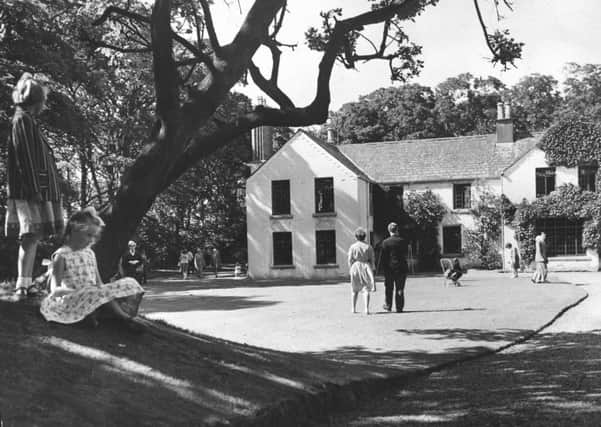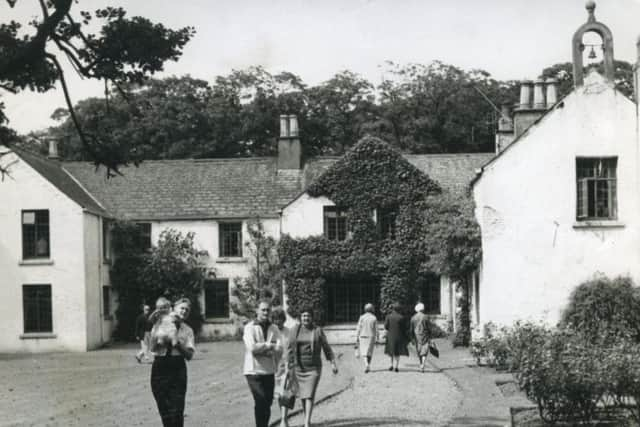Inside the hall at the heart of Fylde coast history


When the Scots get restive it is always a worrying time for Lancashire folk, who have seen the passage of Scottish armies through Lancashire several times.
Thus it was in 1648 and again in 1745 when the Jacobites passed south in hope and back again in defeat, their supporters scattering through the Fylde and Over Wyre. The McNeals, later tenants of Parrox farm, are said to have arrived at this time. Young William Elletson was closely involved with a certain Henry Bracken who it seemed had been rather too close to the Jacobite leaders in Lancaster and was charged with high treason as a result, albeit unsuccessfully.
Advertisement
Hide AdAdvertisement
Hide AdIn 1783 Daniel Elletson, the current Squire, married Jane , daughter of the Reverend Holden of Pilling, a distinguished man of science who was the first to calculate the tide tables for Morecambe Bay. A sundial over the door of his church in Pilling still proclaims ‘Thus Eternity Approacheth’.


During the 1830s a survey of the whole country was carried out to value every field so that the old system of payment of tithes in kind to the church could be updated to a monetary one. Detailed maps of every township were produced as part of this exercise and the entire extent of the Parrox estate in Preesall and Pilling was revealed. The map of Preesall with Hackensall, an original copy of which unusually remains in Preesall, shows the plan of the hall in its complete form as described above and almost as it remains today.
The final draining of Pilling Moss, ‘as boundless as God’s grace’, throughout the 19th century substantially changed the nature of the landscape to the east from wild mossland to a rich agricultural plain with vastly improved accessibility.
The production of peat in the ‘moss dales’ owned by the estate became an obvious extra source of income, followed by the cultivation of crops such as the famous Pilling potatoes.
Advertisement
Hide AdAdvertisement
Hide AdThe railway age began in Lancashire with the opening of the Manchester to Liverpool railway and, by 1840, the Preston and Wyre railway, the last link between London and the new port of Fleetwood, was inaugurated by Queen Victoria.
The final stage locally was the Garstang and Knott End railway, completed in 1908, which passed just 200 yards to the south of Parrox Hall – close enough for the train to stop and wait for the squire to board but now only a memory.
In 1872 an event occurred which was to have unforeseeable but very far reaching consequences. A syndicate of men from Barrow in Furness, lodging at the Black Bull in Preesall, struck a bed of rock salt while drilling for iron ore south of the village.
A sample was dissolved, filtered and boiled by Dorothy, daughter of landlord John Parkinson, to produce the first sample of Preesall salt. The Fleetwood Salt Company was formed to exploit the situation and operations began to extract salt both by mining and brine extraction, with a connection to the Garstang and Knott End railway and to a jetty on the Wyre from which rock salt was exported all over the world.
Advertisement
Hide AdAdvertisement
Hide AdLarge volumes of water were pumped from wells on the Parrox estate to enable salt to be dissolved, extracted and pumped across the river as brine to the plant at Burn Naze. The eventual results were large areas of instability and subsidence throughout Preesall, leading to the closure of the mine and incalculable effects on the local economy and landscape, still being felt today.
The late 19th century was the heyday of the country landowner and the Parrox estate. The income from the estate enabled Harry Chandos Elletson, who inherited in 1895, to maintain Parrox Hall with a domestic staff of at least eight, including a butler, and to rent a house in London for several months of the year to which the family and servants moved, returning home at the end of the London season.
In 1956 the whole of the Pilling estate of about 1,550 acres was sold by Daniel Hope Elletson to Imperial Chemical Industries, successor of the earlier companies engaged in the salt industry, which had been extracting ground water from it since 1923. As a result the estate was limited to Preesall only, as it remains today.
There were some changes to the house during the last century and a half, including minor extensions to the west and central wings and construction of the entrance loggia on the north elevation, giving the house its present appearance on the main
approach side.
Advertisement
Hide AdAdvertisement
Hide AdDuring the Second World War, Parrox Hall was occupied by the Navy, which used the eastern half of the house to accommodate a team of WRENs, the family retaining the western half. For this purpose the authorities installed partitions on the first floor to divide off separate bedrooms and bathrooms.
The late squire, Daniel Hope Elletson, established the Parrox Hall Preservation Trust as a registered charity to preserve and maintain the Hall and its environs for the benefit of future generations. Now under the guidance of former Wyre MP Harold Elletson, present incumbent and descendent of the original 12th century Crossbowman, the Trust undertakes conservation and restoration initiatives and one of its main aims is to increase public awareness of, and access to, Parrox Hall by means of a series of open days and special events in the Hall and gardens which are ongoing.